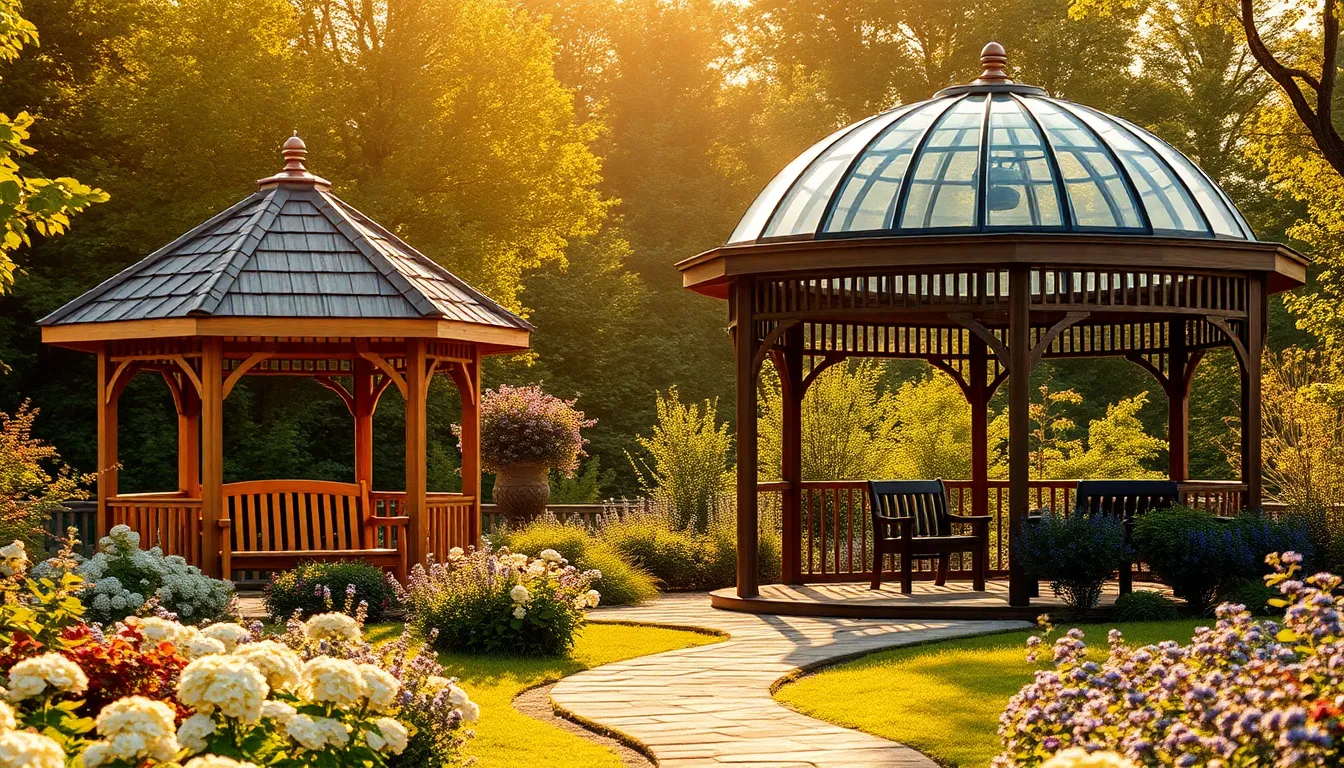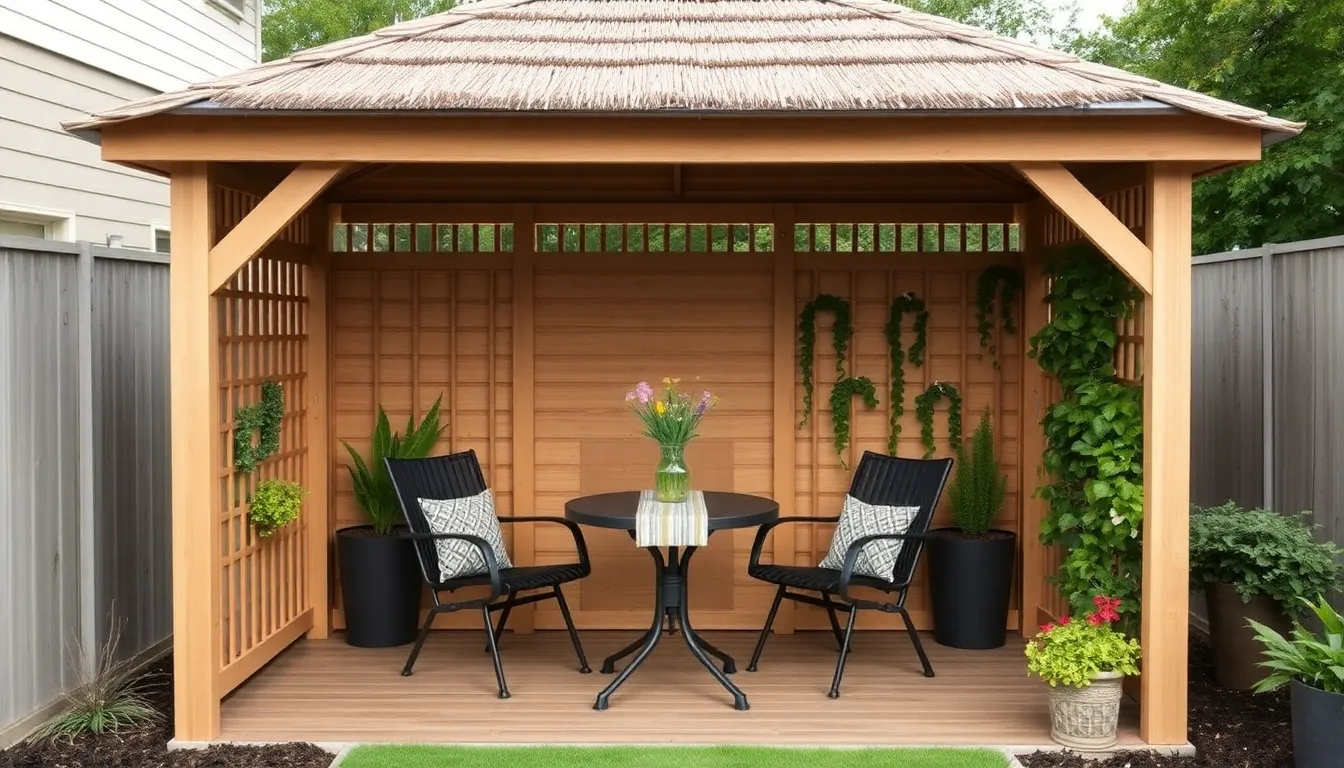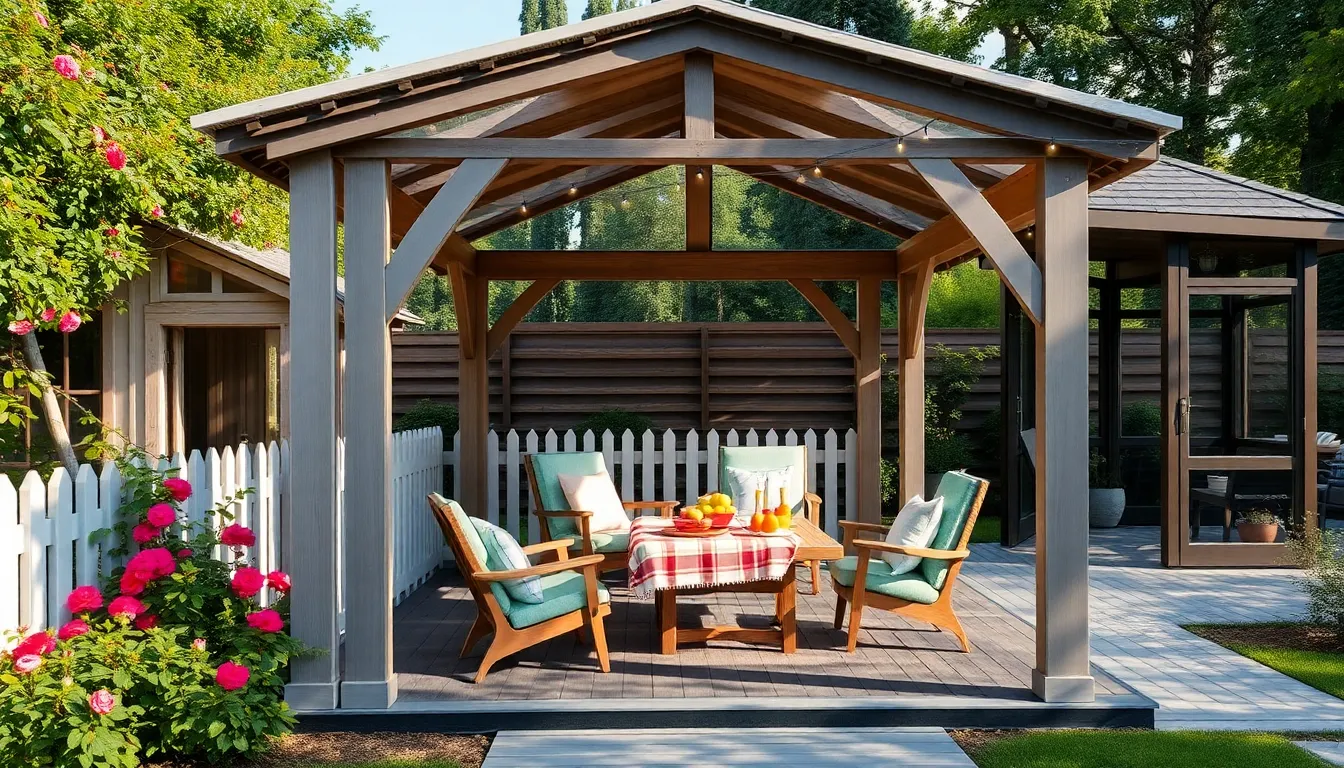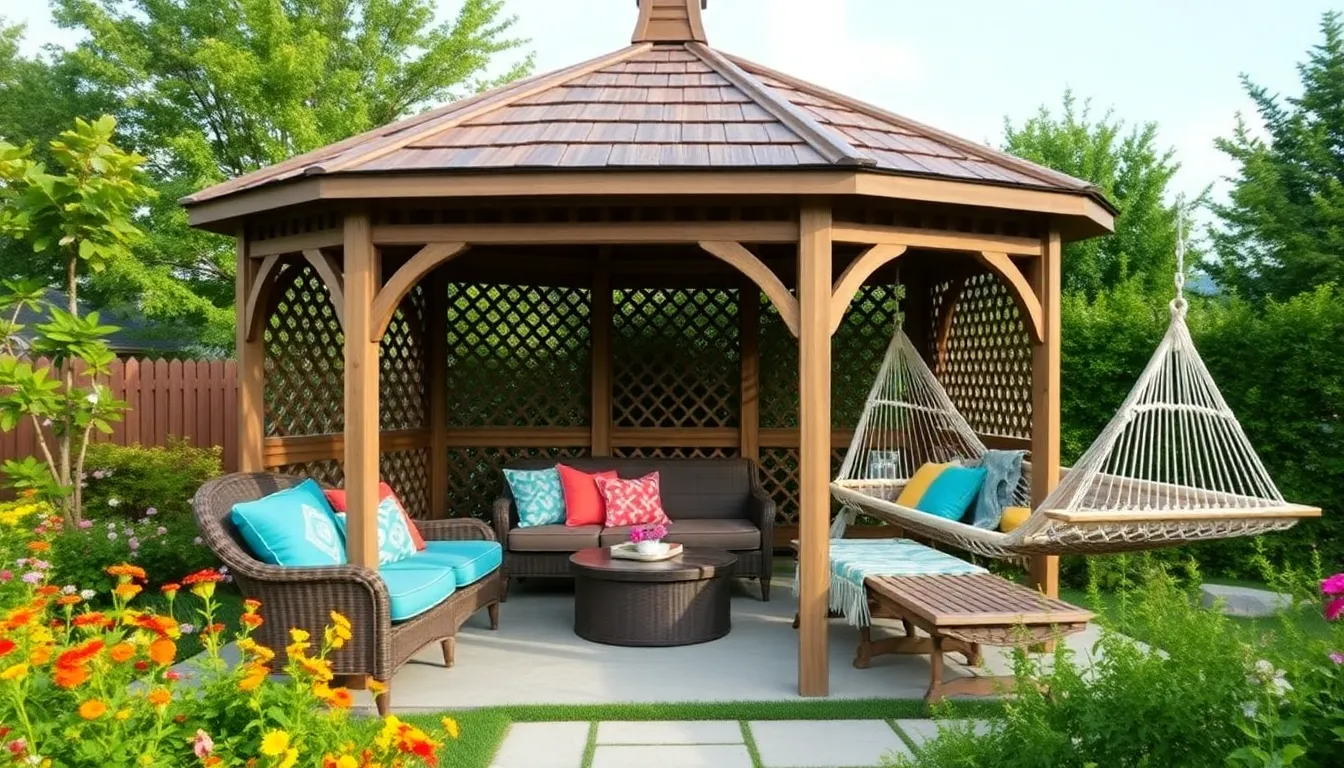Transforming your backyard into a personal haven hinges on the details, and choosing the right gazebo roof style is a pivotal decision that can elevate your outdoor experience. Whether you’re a novice embarking on your first outdoor project or a seasoned homeowner looking to refine your space, understanding the nuances of gazebo roof styles can significantly impact both the aesthetics and functionality of your shelter.
In this guide, you’ll discover how to navigate through the vast array of roof styles, from classic gables to modern flat designs, each offering unique benefits tailored to different needs and tastes. We’ll equip you with practical insights and expert tips to ensure your selection not only complements your home’s architecture but also stands resilient against the elements, promising many years of enjoyment and comfort.
Identify Your Climate Needs

Understanding your local climate is crucial when selecting the right gazebo roof style. In areas with heavy rainfall, a gazebo roof with a steep pitch can facilitate water runoff, preventing pooling and potential damage. Opt for durable materials like metal or treated wood, which can withstand moisture and resist rot. For regions prone to high winds, ensure your gazebo is anchored securely, and consider using reinforced materials like steel or polycarbonate to enhance stability and longevity.
For those living in sunny climates, a roof material that offers UV protection, such as polycarbonate or treated fabric, can help protect against sun damage. You may also want to incorporate design elements like ventilation to allow heat to escape, keeping the gazebo cooler. Advanced gardeners might consider a retractable canopy system, which offers flexibility to adjust shade as needed throughout the day. By aligning your gazebo’s design with your climate needs, you can enjoy a comfortable and durable outdoor space year-round.
Evaluate Architectural Aesthetics

When evaluating the architectural aesthetics of your gazebo, consider how its style and materials will complement your existing outdoor space. Choosing a roof style that aligns with your home’s architecture can create a cohesive look. For example, a hipped roof can offer a more traditional appearance and works well with colonial or farmhouse-style homes. Meanwhile, a flat roof might suit a modern or minimalist landscape. Materials like cedar shingles or metal roofing not only add visual appeal but also provide durability, with cedar offering a warm, natural look and metal providing sleek, long-lasting protection.
Think about incorporating design elements that enhance the visual interest of your gazebo. Adding decorative details such as cupolas or finials can elevate the gazebo’s aesthetic, providing a focal point that draws the eye. If you prefer simplicity, consider the clean lines of a gable roof, which can create a sense of openness and height. For advanced builders, integrating skylights or translucent panels into the roof design can bring in natural light, making the space feel airy and inviting. Always ensure that the chosen materials and design elements align with both your taste and maintenance capabilities.
Consider Roofing Material Options

When selecting roofing materials for your gazebo, consider both durability and aesthetics. Popular choices include asphalt shingles, metal roofing, and polycarbonate panels, each offering unique benefits. Asphalt shingles are cost-effective and provide a classic look, while metal roofing offers excellent durability and a sleek, modern appearance. Polycarbonate panels are lightweight and allow natural light to filter through, making them ideal for those who prefer a brighter space.
For a more personalized touch, consider matching the gazebo roof material to your home’s existing architecture. Advanced tips for seasoned DIYers include integrating solar panels into metal roofs to enhance sustainability. Ensure your chosen material withstands local weather conditions; for instance, metal roofs are excellent in snowy regions due to their ability to shed snow easily. By aligning material choice with both functional needs and aesthetic desires, your gazebo will be a harmonious addition to your outdoor space.
Analyze Roof Pitch Requirements

When analyzing roof pitch requirements for your gazebo, it’s essential to consider both aesthetics and functionality. A steeper pitch, typically above 20 degrees, allows for efficient water runoff, which is crucial in areas with significant rainfall. For a classic look, consider a hip roof style that features a gentle slope on all sides, offering excellent stability and wind resistance. Ensure that your chosen design complements your landscape and provides the necessary protection from weather elements.
For homeowners living in windy areas, a lower pitch, such as a 10-degree slope, can help minimize wind impact on the structure. It’s helpful to use durable materials like metal or composite shingles which are both lightweight and robust, reducing stress on the frame. Beginners should opt for readily available kits that include pre-measured and cut materials, simplifying the installation process. With these considerations, you can ensure your gazebo not only enhances your outdoor space aesthetically but also stands up to the elements effectively.
Match Style with Gazebo Design

To harmonize your outdoor space, it’s essential to align the gazebo design with your overall garden style. If your garden has a rustic feel, consider a wooden gazebo with a natural finish and a classic gabled roof. For modern landscapes, opt for sleek metal or even composite materials in neutral tones, paired with a flat or slightly sloped roof for a minimalist look. Choose designs that complement your existing outdoor furniture to create a cohesive look that ties your space together.
When selecting materials, consider both aesthetics and durability. Cedar and pine are excellent choices for wooden gazebos due to their natural resistance to insects and rot. For a contemporary twist, explore powder-coated aluminum, which offers a sleek appearance and low maintenance. Advanced gardeners may even experiment with sustainable materials, like reclaimed wood or recycled composites, for an eco-friendly touch. Remember, your gazebo should not only look good but also withstand local weather conditions, so choose materials accordingly to ensure longevity.
Conclusion: Creating Beautiful Outdoor Spaces
In choosing the right gazebo roof style, we’ve explored five key relationship concepts: understanding your partner’s preferences, balancing aesthetics with functionality, considering long-term sustainability, embracing compromise, and fostering open communication. These principles not only enhance your outdoor space but also strengthen the bonds in your relationship by aligning choices with shared values and aspirations.
As an actionable next step, take a moment to discuss with your partner what each of you values most in a gazebo roof style. Whether it’s the charm of a classic gable or the modern appeal of a flat roof, this conversation can be a delightful exercise in collaboration and understanding.
Don’t forget to save or bookmark this article as a handy guide for future outdoor projects. As you continue to nurture your relationship, these insights will be invaluable in making decisions that reflect both individual tastes and collective dreams. Remember, the journey of building a home together is as important as the destination, and every choice you make together strengthens the foundation of your partnership. So go ahead, take action today, and watch your relationship and your home flourish.





